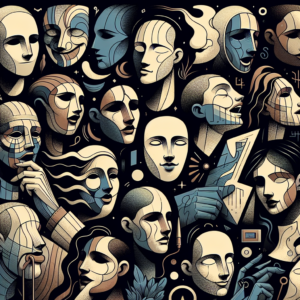Cartoons have been a beloved form of entertainment for decades, captivating audiences young and old with their colorful characters and whimsical worlds. One recurring theme in many cartoons over the years has been the depiction of sad dogs. From droopy eyes to downcast tails, these lovable animated pooches tug at our heartstrings and make us root for their happiness. But how has the portrayal of sad dogs in cartoons evolved over time? Let’s dive into the fascinating history of how our favorite animated pups have evolved from mere sidekicks to complex characters with their own emotional arcs.
The Early Days: Sad Dogs as Comic Relief
In the early days of animation, sad dogs were often used as comic relief in cartoons. These lovable pups would often find themselves in humorous predicaments, whether they were chasing their tails or getting themselves into mischief. Characters like Spike from Tom and Jerry or Pluto from Mickey Mouse exemplified this trope, providing levity and laughs in the midst of the chaos.
While these early representations of sad dogs may have been simplistic, they laid the foundation for the evolution of the trope in later years. Audiences started to develop a soft spot for these lovable but downtrodden characters, paving the way for more nuanced depictions of sadness in animated dogs.
The Golden Age: Emotional Depth and Storytelling
As animation techniques advanced and storytelling became more sophisticated, the portrayal of sad dogs in cartoons began to take on new dimensions. No longer just one-dimensional comic relief, animated dogs started to be given more emotional depth and compelling storylines that explored themes of friendship, loyalty, and perseverance.
Characters like Charlie B. Barkin from All Dogs Go to Heaven or Copper from The Fox and the Hound showcased the evolution of sad dogs in cartoons, with their heartfelt journeys and struggles that resonated with audiences of all ages. These animated pooches became more than just sidekicks; they became protagonists in their own right, drawing viewers into their emotional journeys.
The Modern Era: Complex and Nuanced Depictions
In today’s animated landscape, the depiction of sad dogs in cartoons has reached new heights of complexity and nuance. Animated films like Up and Coco have showcased the emotional richness that can be achieved through the portrayal of animated dogs, with their layered personalities and poignant narratives that tug at the heartstrings.
Characters like Dug from Up or Dante from Coco have become fan favorites, beloved for their loyalty, humor, and unwavering devotion to their human companions. These animated pups are no longer just symbols of sadness, but fully-fleshed out characters with their own hopes, fears, and dreams.
The Future: Empathy and Understanding
As we look to the future of animated storytelling, it’s clear that the evolution of sad dogs in cartoons will continue to push boundaries and challenge conventions. Animated filmmakers are increasingly using dogs as a metaphor for the human experience, exploring themes of love, loss, and redemption through the eyes of these beloved canine companions.
By portraying sad dogs with empathy and understanding, animators are able to connect with audiences on a deeper emotional level, eliciting tears, laughter, and everything in between. These animated pooches remind us of our own vulnerabilities and struggles, while also offering hope, resilience, and the enduring power of friendship.
Conclusion
The evolution of depiction of sad dogs in cartoons has come a long way since the early days of animation. From humble beginnings as comic relief to complex and nuanced portrayals in modern animated films, our favorite animated pups have captured our hearts and sparked our imaginations with their emotional journeys.
As we continue to explore the emotional depths of animated storytelling, we can look forward to even more compelling depictions of sad dogs in cartoons that challenge and inspire us. Whether they’re making us laugh, cry, or reflect on our own lives, animated dogs will always hold a special place in our hearts as loyal companions and timeless symbols of love and loyalty.
FAQ
What are some iconic sad dogs in cartoons?
Some iconic sad dogs in cartoons include Pluto from Mickey Mouse, Charlie B. Barkin from All Dogs Go to Heaven, Dug from Up, and Dante from Coco. These beloved animated pups have captured the hearts of audiences with their emotional depth and heartfelt journeys.
Why do audiences connect with sad dogs in cartoons?
Audiences connect with sad dogs in cartoons because they mirror the human experience of love, loss, and resilience. Animated dogs serve as metaphors for our own vulnerabilities and struggles, reminding us of the enduring power of friendship and the importance of empathy and understanding.
How has the portrayal of sad dogs in cartoons evolved over time?
The portrayal of sad dogs in cartoons has evolved from simple comic relief to complex and nuanced depictions that explore themes of friendship, loyalty, and perseverance. Animated filmmakers have increasingly used dogs as vehicles for emotional storytelling, pushing boundaries and challenging conventions to create compelling narratives that resonate with audiences of all ages.








+ There are no comments
Add yours